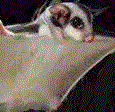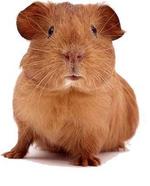
"Ooo ooo that smell... can't you smell that smell... ooo ooo that
smell... that smell that surrounds yooooou..." Oh, Uh, Uhemm, uh, Hi there. "Little" here. Your Little Paws Pet Club President.
Today I thought that I would talk about natural ways to eliminate pet odors and stains.
There are several methods touted as effective means for removing pet stains and urine odors using natural household ingredients. Some natural pet odor remover recipes sell online for up to $10. Now you can save your money because I've listed several natural pet odor remover recipes here that are proven to be effective.
Be sure to do a patch test in an inconspicuous area before using these suggestions.
Also be sure to blot the area as dry as possible before using these methods.
Corn Starch
Working corn starch on the area and then vacuuming draws out the urine and there is no lingering smell.
Mouth Wash
Lister*** mouth wash will remove urine odors. Dilute with two parts water and spray or pour it on the problem area and let it sit for several hours. Then place a stack of newspaper on top to soak up the excess liquid. Vacuum when you remove the newspapers. The mouthwash smell will be gone within a couple of days.
Hydrogen Peroxide
You might want to try hydrogen peroxide. Be sure to test a small spot first to make sure it doesn't remove color. Pour it on, work it in a bit and let it dry.
Baking Soda
Sprinkle baking soda on the affected area and leave it to absorb overnight. The next day, vacuume up the first batch of baking soda. Pour another dry batch of baking soda on the carpet, and using a wet cloth, rub the creamy wet mixture into the area. Next rinse the mixture with clean water. Vacuume well when the area is dry.
Baking Soda, Water, Vinegar
Create a baking soda and water paste. Rub it into the area and apply distilled white vinegar over it. Blot this up with clean white towels, and repeat it no more than two times. Follow that with a good rinsing of water, blotting up the moisture. It will smell like vinegar for a short time, but the urine smell should not come back.
Wintergreen Scented Rubbing Alcohol
Use wintergreen scented rubbing alcohol from a dollar store. Splash it on the area. It dries fast and doesn't have to be rinsed. The smell of the wintergreen disappears in a few days. This also works for cat urine as well. It's a cheap and effective fix!
General Carpet Deodorizing
For general deodorizing, you can also try sprinkling this baking soda recipe on carpeting monthly, or as needed, before going to bed and let it set overnight. Vacuum the next day.
1/2 cup baking soda
1/2 cup cornstarch
15 drops of your favorite essential oil fragrance
We would love to have you share your natural methods for removing pet odors and stains as well. You can share your methods at the end of this post in the comments section. Thanks for sharing!




















































